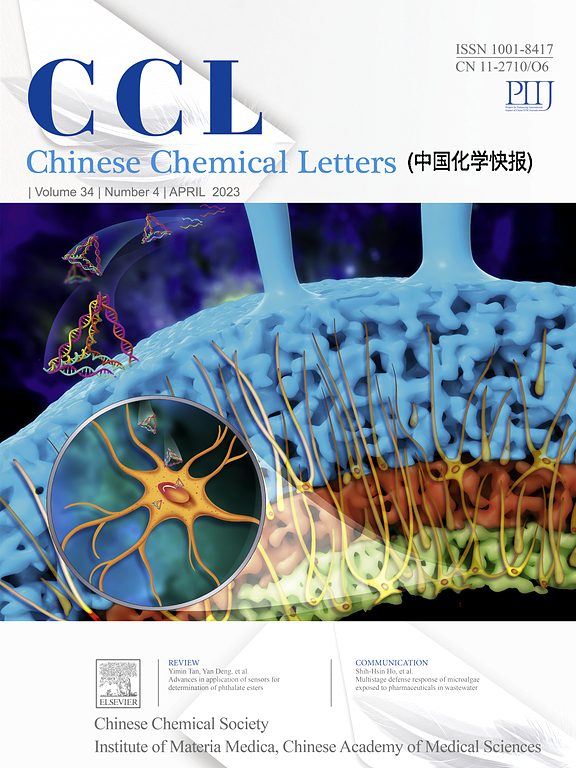Expeditious synthesis and applications of isoquinoline ring-modified Quinap derivatives
IF 9.4
1区 化学
Q1 CHEMISTRY, MULTIDISCIPLINARY
引用次数: 0
Abstract
A wide range of isoquinoline ring-modified Quinap oxides with different steric and electronic variations have been constructed through a palladium-catalyzed imidoylative cyclization of arylethenyl isocyanides with 2-diphenylphosphinyl-1-naphthyl bromides. The Pd-catalysis plays dual roles in the formation of both axial C–C bond and isoquinoline ring. This de novo synthetic strategy features good functional group tolerance, high yields and easy scale-up, providing Quinap derivatives with substitution patterns that could not be obtained using coupling reactions. Chiral ligands 7 and 12 can be readily prepared by transformation of the resulting Quinap oxide to their BINOL esters, and have been proven to be superb chiral ligands for the copper-catalyzed enantioselective A3-coupling and alkynylation of quinoline reactions. In general, the enantioselectivies obtained using ligands 7 and 12 are excellent, and the ee values are higher than those using Quinap as ligand, even three times higher in some cases. Mechanism studies revealed that a monomeric copper(I) complex bearing a single chiral ligand was formed and served as the catalytically active species.
异喹啉环修饰醌类衍生物的快速合成及应用
通过钯催化的酰基异氰酸酯与2-二苯基膦酰-1-萘酰溴的咪酰环化反应,构建了一系列具有不同空间和电子变化的异喹啉环修饰的醌氧化物。pd催化在轴向C-C键和异喹啉环的形成中起双重作用。这种新的合成策略具有良好的官能团耐受性,高收率和易于规模化,为喹那普衍生物提供了通过偶联反应无法获得的取代模式。手性配体7和12可以很容易地将所得到的醌氧化物转化为它们的BINOL酯,并且已被证明是铜催化的对映选择性a3偶联和喹啉烷基化反应的极好的手性配体。总的来说,用配体7和12得到的对映体选择性都很好,ee值高于用Quinap作为配体的对映体,在某些情况下甚至高出3倍。机理研究表明,单手性配体形成了铜(I)配合物,并具有催化活性。
本文章由计算机程序翻译,如有差异,请以英文原文为准。
求助全文
约1分钟内获得全文
求助全文
来源期刊

Chinese Chemical Letters
化学-化学综合
CiteScore
14.10
自引率
15.40%
发文量
8969
审稿时长
1.6 months
期刊介绍:
Chinese Chemical Letters (CCL) (ISSN 1001-8417) was founded in July 1990. The journal publishes preliminary accounts in the whole field of chemistry, including inorganic chemistry, organic chemistry, analytical chemistry, physical chemistry, polymer chemistry, applied chemistry, etc.Chinese Chemical Letters does not accept articles previously published or scheduled to be published. To verify originality, your article may be checked by the originality detection service CrossCheck.
 求助内容:
求助内容: 应助结果提醒方式:
应助结果提醒方式:


